More than 350 million people worldwide are living with chronic hepatitis B or C. Many don’t know it. And that’s the problem. These viruses don’t always cause symptoms until the liver is badly damaged-sometimes decades later. But the tools we have now to stop them are better than ever. If you’re wondering how these infections spread, how to find out if you have them, and whether there’s real hope for treatment, here’s what you need to know-straight from current guidelines, real-world data, and the latest science.
How Hepatitis B and C Spread (And What Doesn’t Spread Them)
Hepatitis B and C are both bloodborne viruses, but they don’t spread the same way. And that’s where confusion starts.Hepatitis B is incredibly contagious. It’s about 100 times more infectious than HIV. You can catch it through:
- Birth-from an infected mother to her baby during delivery (this is the #1 cause of chronic infection in places like Asia and Africa)
- Sex-especially without a condom. If your partner has hepatitis B, your risk of getting it is 30-60%
- Needles-sharing syringes, but also tattoo or piercing tools that aren’t sterile
- Shared personal items-razors, toothbrushes, or even nail clippers if they have tiny traces of blood
- Healthcare exposure-needlesticks or accidental contact with infected blood
But here’s what doesn’t spread hepatitis B: hugging, kissing, sharing food, using the same toilet, or being around someone who coughs or sneezes. It’s not airborne. It’s not casual. That’s important to know-stigma kills more than the virus sometimes.
Hepatitis C is simpler: it spreads almost entirely through blood. The biggest driver today? The opioid crisis. In the U.S., two-thirds of new hepatitis C cases happen in people under 40 who inject drugs. Other routes include:
- Sharing needles or drug paraphernalia
- Unscreened blood transfusions (rare now in high-income countries)
- Needlestick injuries in healthcare
- Mother-to-child transmission-about 5-6% of babies born to infected mothers get it
Unlike hepatitis B, hepatitis C is not spread through sex under normal circumstances. But the risk goes up if you’re HIV-positive, have multiple partners, or engage in rough sex that causes bleeding.
Who Should Get Tested-and When
Testing is the first step to stopping these viruses. But most people don’t get tested until it’s too late.The CDC now recommends everyone get tested for hepatitis C at least once in their life, starting at age 18. Pregnant people should be tested during every pregnancy. If you’ve ever injected drugs-even once, decades ago-you need a test. Same if you got a blood transfusion before 1992, or if you’re on dialysis.
For hepatitis B, testing is just as critical. The CDC advises:
- All adults get tested at least once
- Everyone pregnant gets tested
- People born in regions with high hepatitis B rates (Asia, Africa, Eastern Europe, the Pacific Islands) should be tested regardless of age
- People with HIV, liver disease, or those taking immunosuppressants
- Household or sexual partners of someone with hepatitis B
And here’s a hard truth: 44% of people with hepatitis C and 30% of those with hepatitis B don’t know they’re infected. That’s because symptoms often don’t show up for years. By then, the liver may already be scarred.
How Testing Works
Testing for hepatitis B is a blood panel. It’s not one test-it’s three or four together:- HBsAg: If positive, you have an active infection
- Anti-HBc: Shows you’ve been exposed at some point
- Anti-HBs: Means you’re immune-either from vaccine or past infection
- HBV DNA: Measures how much virus is in your blood
For hepatitis C, it’s two steps:
- Anti-HCV antibody test: Tells you if you’ve ever been exposed
- HCV RNA test: Confirms if the virus is still active
If the antibody test is positive but the RNA is negative, you had hepatitis C in the past-but your body cleared it. That happens in 15-25% of people. No treatment needed.
There are also rapid tests now. The OraQuick HCV test gives results in 20 minutes using a finger prick. Hepatitis B point-of-care tests are just as accurate-98.5% sensitivity, 99.5% specificity. These are changing testing in rural clinics, prisons, and drug treatment centers.

Treatment Advances: Hepatitis C Is Curable
This is the biggest breakthrough in decades: hepatitis C can be cured.Before 2011, treatment meant months of injections, awful side effects-fatigue, depression, fever-and only a 50% cure rate. Today? A 12-week course of pills. No needles. No fever. Cure rates above 95%.
The drugs are called direct-acting antivirals (DAAs). Examples:
- Epclusa (sofosbuvir/velpatasvir)
- Mavyret (glecaprevir/pibrentasvir)
- Vosevi (sofosbuvir/velpatasvir/voxilaprevir)
They work for all six genotypes of hepatitis C. Even if you’ve had liver damage or cirrhosis, they still work. The treatment is so effective that the WHO now says eliminating hepatitis C as a public health threat is possible-if we can get testing and treatment to the people who need it.
Cost used to be a barrier. In 2014, a full course of sofosbuvir cost $84,000. Today, in the U.S., it’s $24,000-$30,000. In India, Egypt, or Pakistan, generic versions cost under $300. Egypt’s national campaign-screening 4 million people and treating them-cut hepatitis C prevalence from 14.7% in 2008 to 0.9% in 2021. That’s proof it can be done.
Treatment Advances: Hepatitis B Is Manageable, But Not Yet Curable
Hepatitis B is trickier. We can’t cure it yet. But we can control it so well that most people live normal, healthy lives.First-line treatments are antiviral pills:
- Tenofovir alafenamide (TAF)
- Entecavir
These suppress the virus, lower liver inflammation, and reduce the risk of cirrhosis and liver cancer. They’re taken daily, usually for life. Side effects are rare. They’re safe for long-term use.
Some people can stop treatment-especially if they lose the hepatitis B surface antigen (HBsAg). That’s called a functional cure. It happens in only 1-2% of people per year, naturally. With pegylated interferon, that number jumps to 3-7%. But interferon has harsh side effects, so it’s only used in select cases.
What’s coming next? Several drugs are in late-stage trials:
- siRNA therapies (like JNJ-3989): Silence the virus at the genetic level
- Capsid assembly modulators: Disrupt how the virus builds itself
- Therapeutic vaccines: Train the immune system to fight the virus
These aren’t available yet, but experts believe a functional cure for hepatitis B could be within reach by 2030.
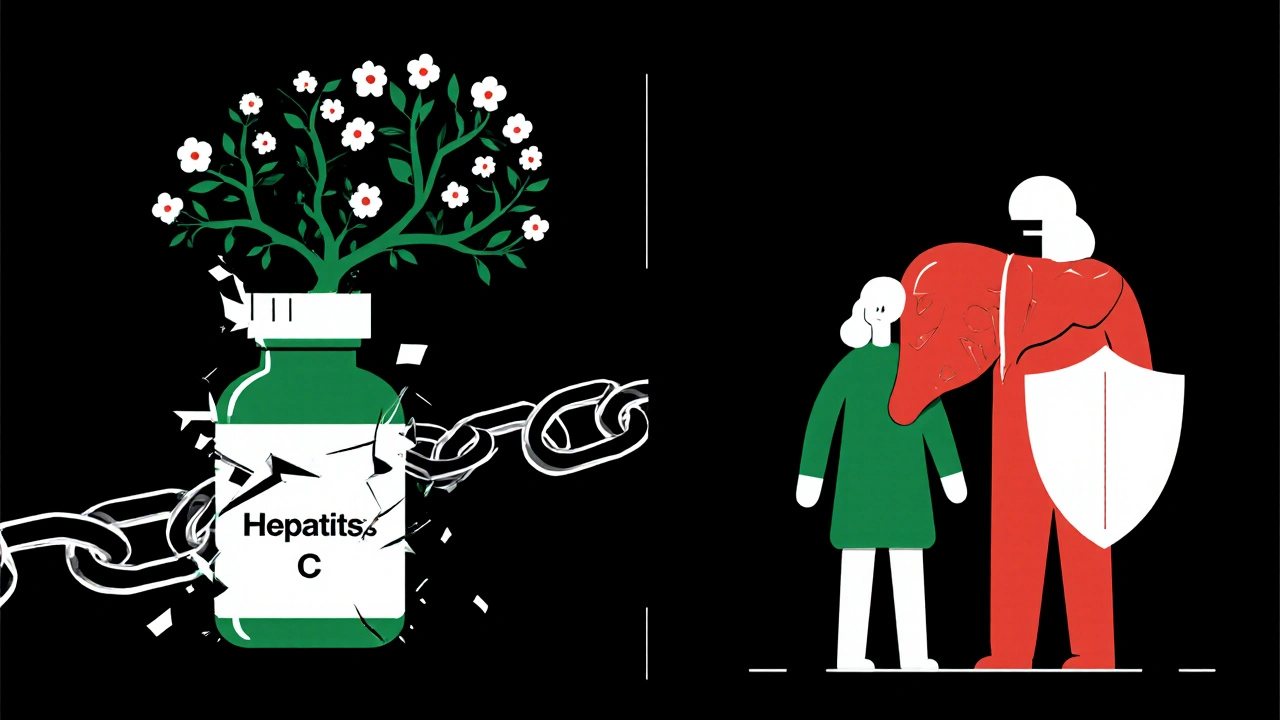
Prevention: The Vaccine That Works
Hepatitis B has a vaccine. It’s been around since 1986. It’s safe. It’s effective. And it lasts for life.The key is timing. The World Health Organization recommends the first dose be given within 24 hours of birth. In countries that do this, chronic hepatitis B in children has dropped by 90%. In Australia, since universal infant vaccination started in 1990, new cases in kids under 15 are nearly zero.
But adult vaccination rates are low. In the U.S., only 66.5% of adults have completed the 3-dose series. That’s nowhere near the 90% target. Why? Lack of awareness. Cost. Misconceptions.
If you’re over 18 and haven’t been vaccinated, get the shot. It’s three doses over six months. Most insurance covers it. If you’re uninsured, community clinics often offer it for free.
There’s no vaccine for hepatitis C. So prevention means avoiding blood exposure: don’t share needles, use sterile equipment for tattoos, practice safer sex if you’re at risk.
Why Progress Is Slowing-and What Needs to Change
We have the tools. But we’re not using them.In 2020, only 21% of people with hepatitis C in the U.S. got treated. Why? Many don’t know they’re infected. Others can’t afford care. Some fear stigma. Others are told, “You don’t look sick,” so treatment gets delayed.
Hepatitis B is even harder. Even when people know they’re infected, only 10-20% get regular monitoring or antiviral therapy. Why? Because it’s a lifelong commitment. Doctors don’t always push it. Patients don’t always understand the long-term risk.
And then there’s the opioid crisis. In rural areas, hepatitis C is surging. People don’t go to clinics. They don’t trust the system. Community health workers-people from the same neighborhoods-are the answer. They go door to door. They offer testing in vans. They connect people to treatment. That’s how Egypt did it. That’s how we need to do it everywhere.
The WHO wants to cut new hepatitis B and C infections by 90% and deaths by 65% by 2030. That’s ambitious. But it’s possible-if we test more, treat more, vaccinate more, and stop treating these viruses like secrets.
What You Can Do Today
If you’re reading this, here’s your action plan:- Get tested for hepatitis C if you’re 18 or older-even if you feel fine
- Get tested for hepatitis B if you were born in Asia, Africa, Eastern Europe, or the Pacific Islands
- Ask your doctor if you need the hepatitis B vaccine
- If you inject drugs, use clean needles. If you can’t, get help. Naloxone and needle exchanges save lives
- If you’re pregnant, ask for hepatitis B and C screening
- If you’re living with hepatitis B or C, see a liver specialist. Don’t wait for symptoms
These viruses don’t care about your income, your job, or your background. They only care if you’re exposed. But now, we have the power to stop them. You just need to act.
Can you get hepatitis B from kissing?
No, you can’t get hepatitis B from kissing, hugging, or sharing food. The virus isn’t spread through saliva unless there’s blood involved-like open sores or bleeding gums. Even then, the risk is extremely low. The main routes are blood, sex, and birth.
Is hepatitis C a death sentence?
Absolutely not. Hepatitis C is curable in over 95% of cases with an 8-12 week course of pills. Even people with advanced liver disease can be cured. The biggest danger isn’t the virus itself-it’s not knowing you have it. Left untreated for decades, it can lead to cirrhosis or liver cancer. But with treatment, that risk drops dramatically.
Do I need to tell my partner if I have hepatitis B or C?
Yes, ethically and for their health. For hepatitis B, your partner should get tested and vaccinated if they haven’t already. For hepatitis C, use condoms if you’re not in a long-term monogamous relationship, especially if there’s any chance of blood exposure. Most partners are supportive once they understand the facts. You’re not a risk-you’re someone who can protect them by speaking up.
Can you get hepatitis B or C from a tattoo or piercing?
Yes-if the equipment isn’t sterile. Reusing needles or ink that’s been contaminated can spread both viruses. Always choose a licensed studio that uses single-use needles and follows health codes. Ask to see them open new equipment in front of you. If they hesitate, walk out.
Is hepatitis B treatment expensive?
In the U.S., antiviral pills like tenofovir or entecavir cost $6,000-$12,000 a year without insurance. But most insurance plans cover them. Generic versions are available for under $300 a year in countries like India. If you’re uninsured, patient assistance programs from drugmakers can help. Never skip treatment because of cost-liver damage is far more expensive to treat later.
Can I donate blood if I’ve had hepatitis B or C?
No. If you’ve ever had hepatitis B or C-even if you were cured-you can’t donate blood. That’s a permanent deferral. It’s not because you’re dangerous now-it’s because the virus can sometimes reactivate, and blood banks err on the side of safety. But you can still help by volunteering or donating to hepatitis awareness organizations.
Will a hepatitis B vaccine protect me for life?
Yes. Studies show the hepatitis B vaccine provides protection for at least 20 years, and likely for life. You don’t need booster shots unless you’re immunocompromised (like someone on dialysis or with HIV). If you got the full series as a child or adult, you’re protected.

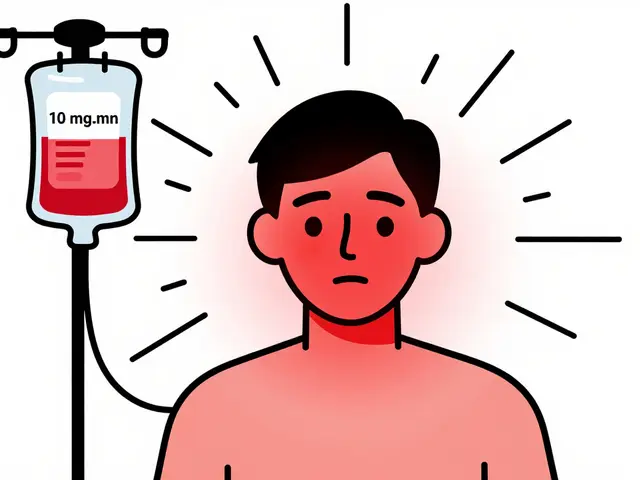

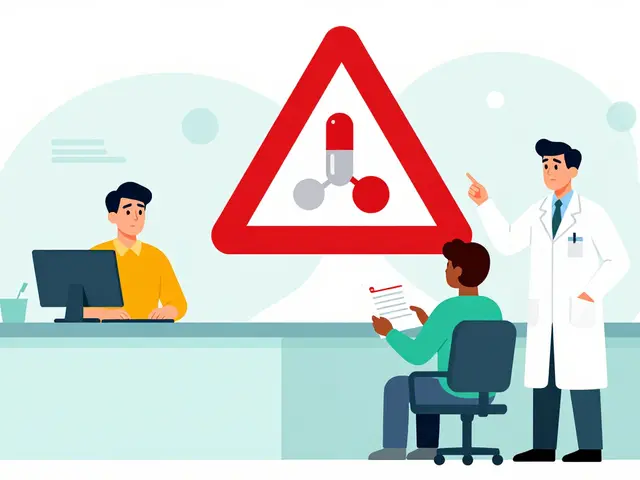
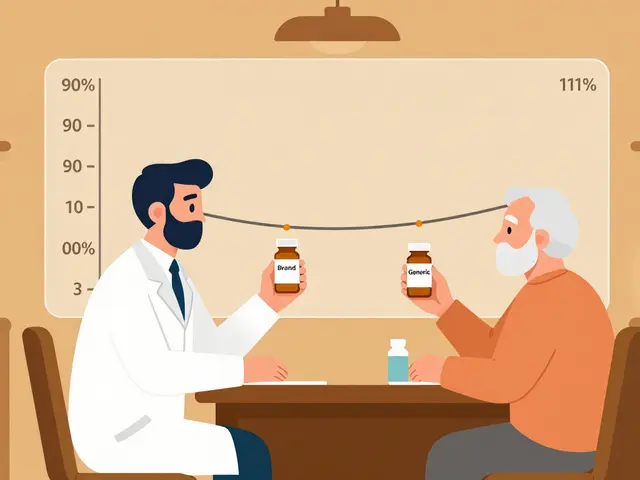
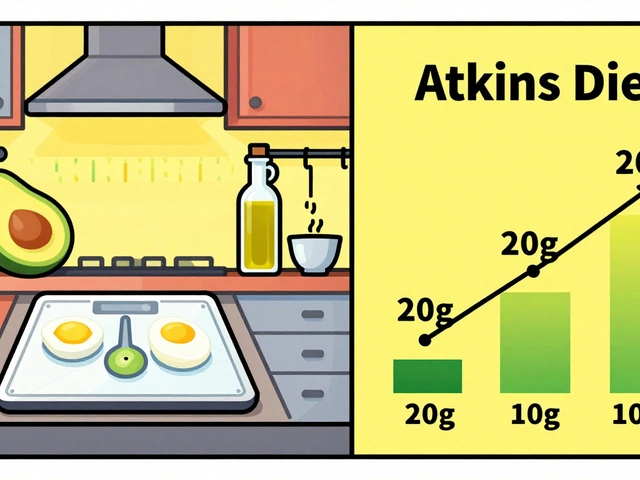
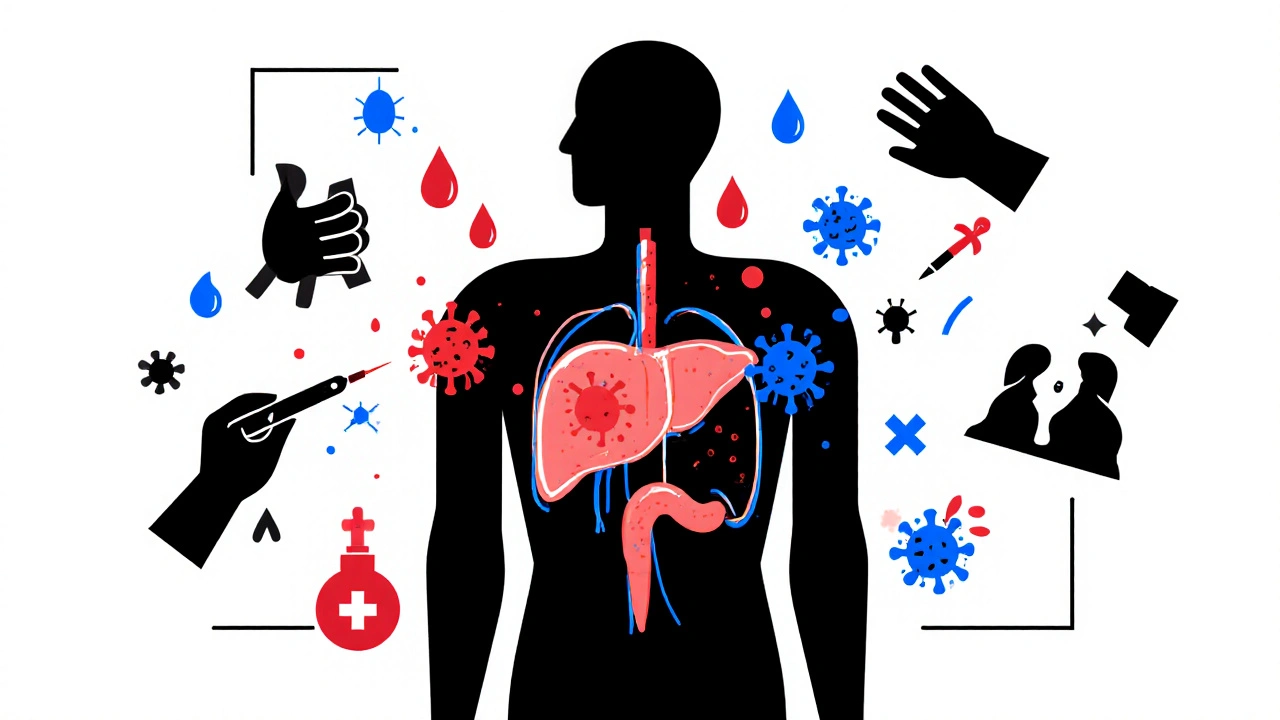
Write a comment